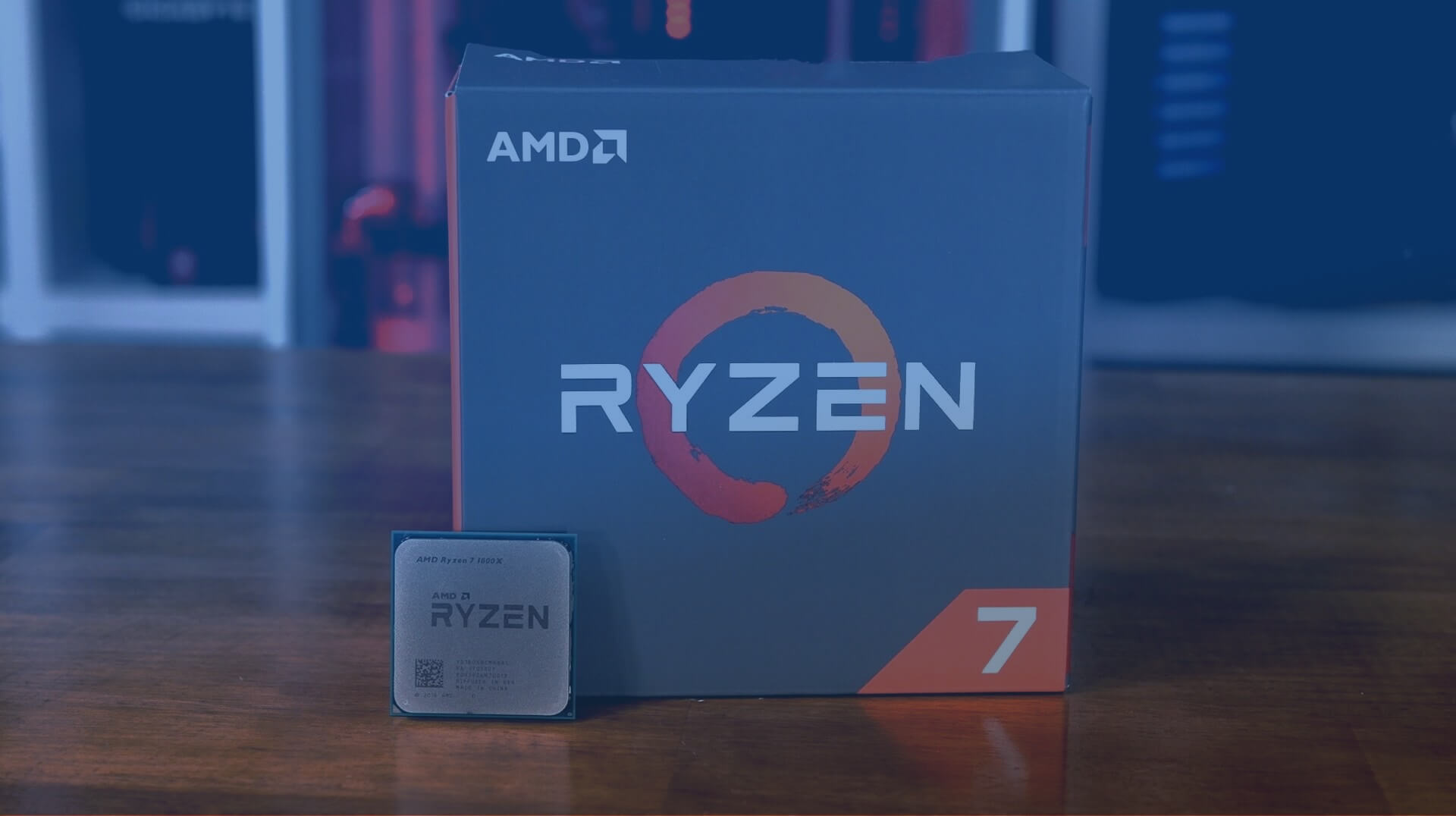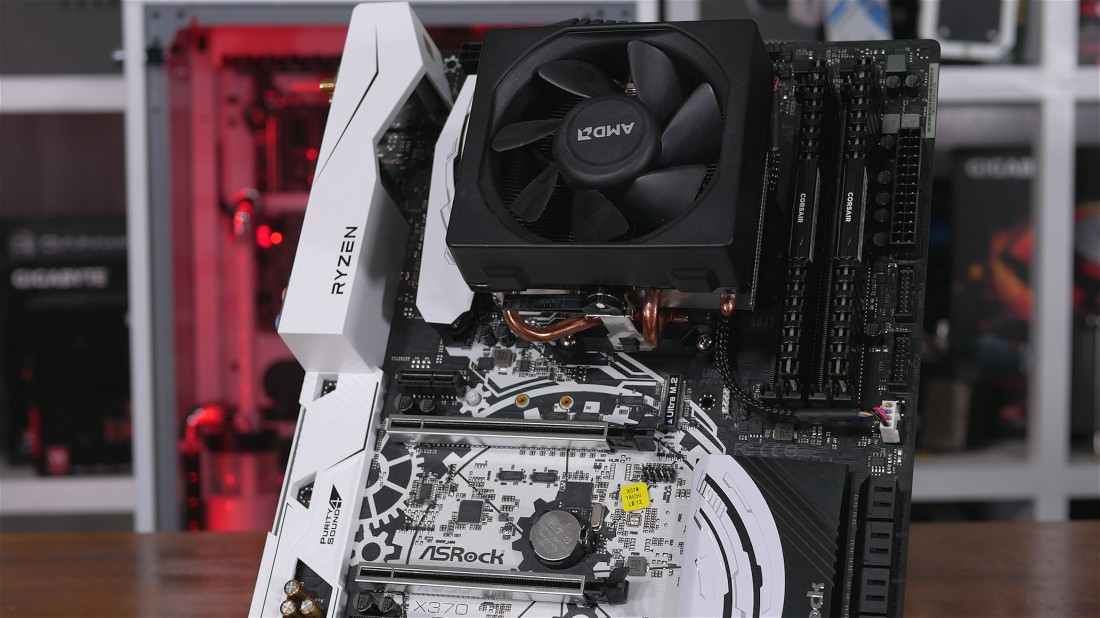After more than a decade of playing underdog and years of hyping its latest undertaking, we've reached the moment of truth: AMD Ryzen processors are on our testbed and we can finally discuss our findings.
Pricing and specs have been divulged and are known to most of you, but to quickly recap: AMD announced last week that its $500 Ryzen 7 1800X would squeeze eight cores/16 threads into a 95W package running at 3.6GHz (4.0GHz boost) and performing on par with Intel's $1,050 eight-core Broadwell-E Core i7-6900K.
AMD is also releasing the Ryzen 7 1700X for $400 featuring the same eight cores, 16 threads and 95W TDP, but with a reduced clock speed of 3.4GHz and 3.8GHz base and boost, respectively. AMD is pitting this chip against the Intel Core i7-6800K, a six-core processor that currently retails for $425.
The final processor launching today is the $300 Ryzen 7 1700. The same eight cores and 16 threads remain, but running at 3.0GHz base and 3.7GHz boost, as well as a lower TDP of 65W. The Ryzen 7 1700 is meant to compete with the Core i7-7700K, which is currently available for $350, though retailers appear to be implementing price cuts on most Intel processors.
The more affordable Ryzen 7 1700 CPU is arguably the most interesting chip in the series as its multiplier remains unlocked for easy overclocking, which could make it possible to achieve 1700X, or possibly even 1800X performance at a fraction of the price. Unfortunately for today's review we don't have one on hand, but we'll have it shortly for a proper review.
AMD said last week that Ryzen beat the company's goal of achieving a 40% IPC improvement over its Excavator architecture. The actual figure is said to be an impressive 52% improvement in IPC, which is enough to make their CPUs competitive and attractive to enthusiast PC builders for the first time in years.
The "Zen" Architecture
AMD says its new x86 architecture called "Zen" is a rare event in the semiconductor industry because it's a "clean-sheet" for the company. Performance-wise, the Zen microarchitecture sets out to not only tackle heavily multi-threaded tasks but also improve-single thread performance using enhanced instruction-level parallelism (ILP).
The architecture features a much larger instruction scheduler window, allowing the CPU to schedule and send more worth into the executions units. A new micro-op cache means that the L2 and L3 cache can be bypassed when utilizing frequently-accessed micro operations.
The company also speaks of a "neural network-based" branch predictor which is used to minimize prediction errors by allowing Zen to be more intelligent about preparing optimal instructions and pathways for future work.
Finally, the last performance feature to be implemented by AMD's latest architecture is SMT (simultaneous multithreading), which permits two threads per core. This is a feature we've seen in some IBM, Intel and Oracle processors and marks a departure from the CMT (clustered multi-thread) design used previously in Bulldozer.
Whereas Bulldozer used modules that performed much like a dual-core, dual-thread processor, Zen adopts SMT for what AMD calls a CPU Complex (CCX) design. CCX is a four-core/eight-thread module featuring its own L1, L2 and L3 cache.
The cache hierarchy looks like this: each core receives a 64KB L1 cache for instructions and data, a 512KB L2 cache and a shared 8MB L3 cache that services four cores. The L1 cache has been changed from write-through to write-back, allowing for lower latency and higher bandwidth. AMD is advertising up to five times greater cache bandwidth and we believe this claim is for the L3 cache while the L1 and L2 are closer to two times faster.
The Ryzen 7 series features two CCX units, enabling eight cores and 16 threads. It's possible for AMD to disable individual cores with the CCX and this is no doubt how they will create the six-core/12-thread models.
For those wondering, the CCXs communicate across the high-speed 'Infinity Fabric', a successor to HyperTransport, which itself had replaced the front-side bus in AMD's Opteron, Athlon 64, Athlon II, Sempron 64, Turion 64, Phenom, Phenom II and FX families of microprocessors.
Infinity Fabric (essentially HyperTransport 2.0) is a flexible interface/bus that facilitates the exchange of data between CCXs, system memory as well as I/O and PCIe controllers. This provides Zen with powerful command and control capabilities for real-time estimations and adjustments to core voltage, temperature, socket power draw, clock speed, and more.
Those command and control capabilities are essential for AMD's SenseMI technology, which is a package of five related "senses" that rely on sophisticated learning algorithms and the aforementioned C&C functionality to fine-tune performance, power characteristics of the cores, manage speculative cache fetches, and perform AI-based branch prediction.
Each Ryzen processor has a grid of interconnected sensors that are accurate to 1mA, 1mV, 1mW and 1-degree C with a polling rate of 1000/sec. These sensors provide telemetry data that feeds into the Infinity Fabric control loop and allows the CPU to make adjustments based on current and expected operating conditions.
The five senses are described as the following:
- Pure Power A closed-loop control system that optimizes clock speeds and frequencies to deliver the best performance at the least power consumption. AMD says Pure Power is used to enable "lower power for same performance."
- Precision Boost Works in tandem with Pure Power, but instead offers higher performance at the same power consumption level through incremental clock speed boosts of 25MHz.
- Extended Frequency Range (XFR) Perhaps the most interesting SenseMI feature, XFR allows the CPU to increase its clock speed beyond rated boost clock frequencies depending on the temperature levels. This sounds similar to Nvidia's GPU Boost 3.0 technology, which often pushed Pascal GPUs well above their rated frequencies. AMD says XFR will reward enthusiast coolers by allowing Ryzen's clock speeds to scale with cooling solutions.
- Neural Net Prediction The use of the term "neural net" is a bit loose here, however this technology will pre-load instructions by anticipating the actions a user can perform ahead of time.
- Smart Prefetch Learns data access patterns to prefetch necessary data into the CPU cache so it can be immediately accessed where necessary.
The AMD AM4 Platform
Complementing the Ryzen processors is AMD's all-new AM4 platform which will launch with three key chipsets: the entry-level A320, the mid-range or mainstream B350, and then enthusiast-grade X370.
| Chipset | USB (3.1 G2 + 3.1 G1 + 2.0) | SATA | SATAe | PCIe Gen 2 | Multi-GPU | Overclocking |
| X370 | 2 + 6 + 6 | 4 | 2 | 8 Lanes | Yes | Unlocked |
| B350 | 2 + 2 + 6 | 2 | 2 | 6 Lanes | No | Unlocked |
| A320 | 1 + 2 + 6 | 2 | 2 | 4 Lanes | No | Locked |
All of the chipsets support NVMe PCIe SSDs, SATA, SATA Express, dual-channel DDR4 memory, native USB 3.1 Gen 2 and more.
The X370 differs from the B350 model by offering more USB 3.1 Gen1 ports, more SATA ports, more PCIe 2.0 lanes and support for multi-GPU technologies. As you can see in the table above, the A320 sacrifices another USB 3.1 port and two more PCIe 2.0 lanes in addition to being locked (no overclocking).
The great thing about the AM4 platform is its flexibility. Socket 1331 streamlines AMD's socket infrastructure (AM3 and FM2+) into a single interface that can support both Ryzen and seventh-generation APUs. AMD also claims that future Raven Bridge and Zen processors will support the AM4 platform. The company plans to keep this socket for several years through 2020 and will integrate future technologies such as PCIe 4.0 and DDR5.






